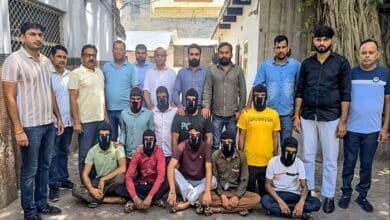
Explore the sacred significance, history, architecture, and travel guide of Manona Dham in this detailed 3000-word blog post.
Manona Dham holds immense spiritual significance for devotees and tourists alike, offering a peaceful retreat steeped in divine energy. Nestled in serene surroundings, Manona Dham is a place where the soul finds solace and inner harmony blossoms. Pilgrims visit Manona Dham year-round to engage in meditation, prayer, and religious rituals, making it one of the most revered destinations in the region. The sacred ambiance of Manona Dham makes it an ideal location for spiritual rejuvenation and connection with divinity.
Historical Background and Legends Associated with Manona Dham
The rich historical background of Manona Dham is filled with ancient tales, legendary events, and cultural milestones that add to its religious charm. According to local beliefs, Manona Dham was established centuries ago by saints and sages who found the land spiritually charged. These legends recount divine occurrences and miracles that further enhance the mystical aura of Manona Dham. Throughout history, Manona Dham has stood as a testament to unwavering devotion and has drawn seekers from far and wide seeking spiritual enlightenment.
Architectural Marvels and Structures at Manona Dham
Manona Dham showcases intricate architecture and traditional craftsmanship that reflect the spiritual ethos of the region. The temple complex of Manona Dham features majestic domes, detailed carvings, and vibrant murals depicting scenes from Hindu epics. The central shrine at Manona Dham is especially captivating, housing deities adorned with rich ornaments and surrounded by artistic pillars. The combination of spirituality and aesthetics at Manona Dham leaves visitors mesmerized and in awe of the sacred artistry preserved through generations.
Festivals and Celebrations Held at Manona Dham
Manona Dham becomes a vibrant hub of activity during festivals, as it hosts various religious events, cultural performances, and community feasts. Major Hindu festivals like Navratri, Diwali, and Ram Navami are celebrated with grand processions and rituals at Manona Dham. These celebrations at Manona Dham attract not only devotees but also culture enthusiasts who wish to witness the temple’s energetic and devotional atmosphere. Manona Dham truly comes alive during these occasions, with colorful decorations, devotional music, and spiritual fervor that captivate every visitor.
Best Time to Visit and Travel Tips for Manona Dham
Planning a visit to Manona Dham requires understanding the best seasons and practical travel tips for a fulfilling experience. The ideal time to visit Manona Dham is between October and March when the weather is pleasant and conducive to spiritual exploration. Visitors are advised to dress modestly, carry essentials, and respect the sanctity of Manona Dham by adhering to temple norms. With convenient transport facilities and nearby accommodations, reaching Manona Dham is relatively easy for both local and international travelers seeking spiritual fulfillment.
Local Culture and Traditions Surrounding Manona Dham
The local culture around Manona Dham is deeply influenced by spiritual values, traditional rituals, and a sense of communal harmony. Residents of the region revere Manona Dham as a divine presence in their lives, often participating in daily aartis, community service, and temple upkeep. Local artisans also contribute to the charm of Manona Dham by creating devotional items, traditional attire, and spiritual souvenirs. This unique blend of devotion and culture makes Manona Dham a living heritage site that promotes unity, peace, and spiritual discipline.
Impact of Manona Dham on Tourism and the Economy
Manona Dham has played a significant role in boosting regional tourism and supporting the local economy through pilgrimage and cultural tourism. The influx of visitors to Manona Dham has led to the growth of nearby hospitality businesses, souvenir shops, and local transportation services. In addition to spiritual fulfillment, Manona Dham offers economic opportunities to locals, enabling sustainable development while preserving religious traditions. By balancing spiritual integrity with tourism, Manona Dham continues to thrive as a model of cultural and economic synergy.
Conclusion
In conclusion, Manona Dham is more than just a religious site—it is a divine experience that awakens the inner self and offers cultural insight. From its ancient legends and intricate architecture to the vibrant festivals and peaceful ambiance, every corner of Manona Dham radiates spirituality and serenity. Whether you are a devotee, history lover, or travel enthusiast, visiting Manona Dham promises a journey of self-discovery and cultural enrichment. Embrace the sacred essence of Manona Dham and let it leave an everlasting impression on your soul.
FAQs
Q1: Where is Manona Dham located?
Manona Dham is located in a spiritually rich region of India, easily accessible by road and rail, attracting thousands of pilgrims annually.
Q2: What is the best time to visit Manona Dham?
The best time to visit Manona Dham is from October to March when the weather is ideal for temple visits and outdoor ceremonies.
Q3: Are there any accommodations near Manona Dham?
Yes, several guesthouses, hotels, and dharamshalas are available near Manona Dham to suit the needs of pilgrims and tourists.
Q4: Can tourists participate in rituals at Manona Dham?
Absolutely, tourists are welcome to observe and sometimes even participate in rituals at Manona Dham, depending on the festival and occasion.
Q5: What should one wear while visiting Manona Dham?
Visitors to Manona Dham should wear modest and respectful clothing, as the temple premises uphold spiritual traditions and decorum.




